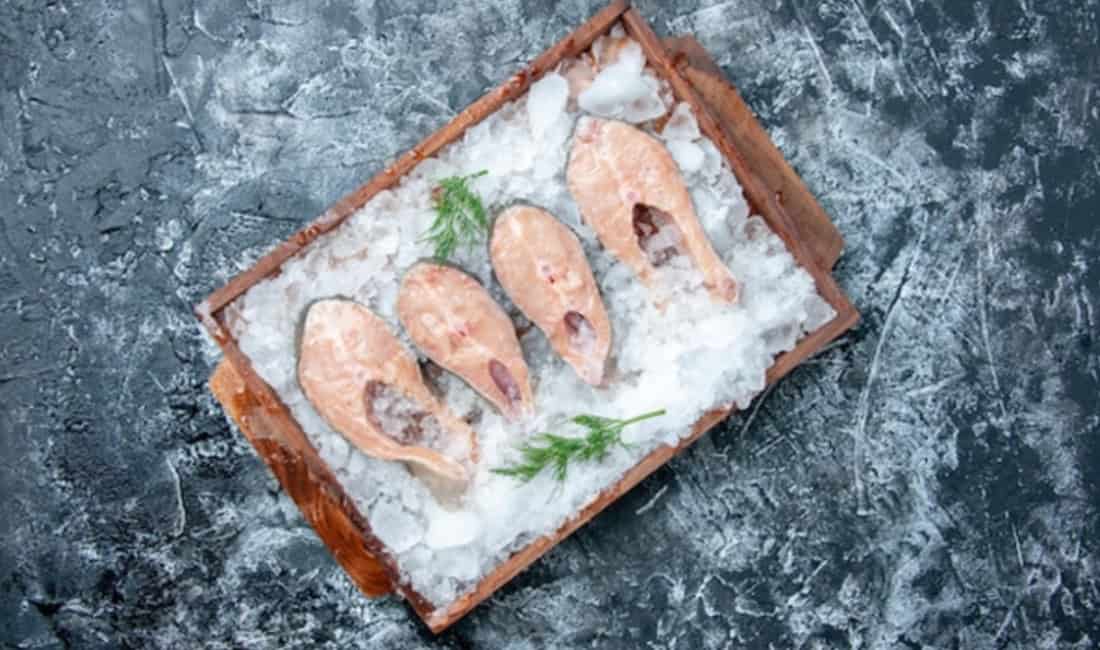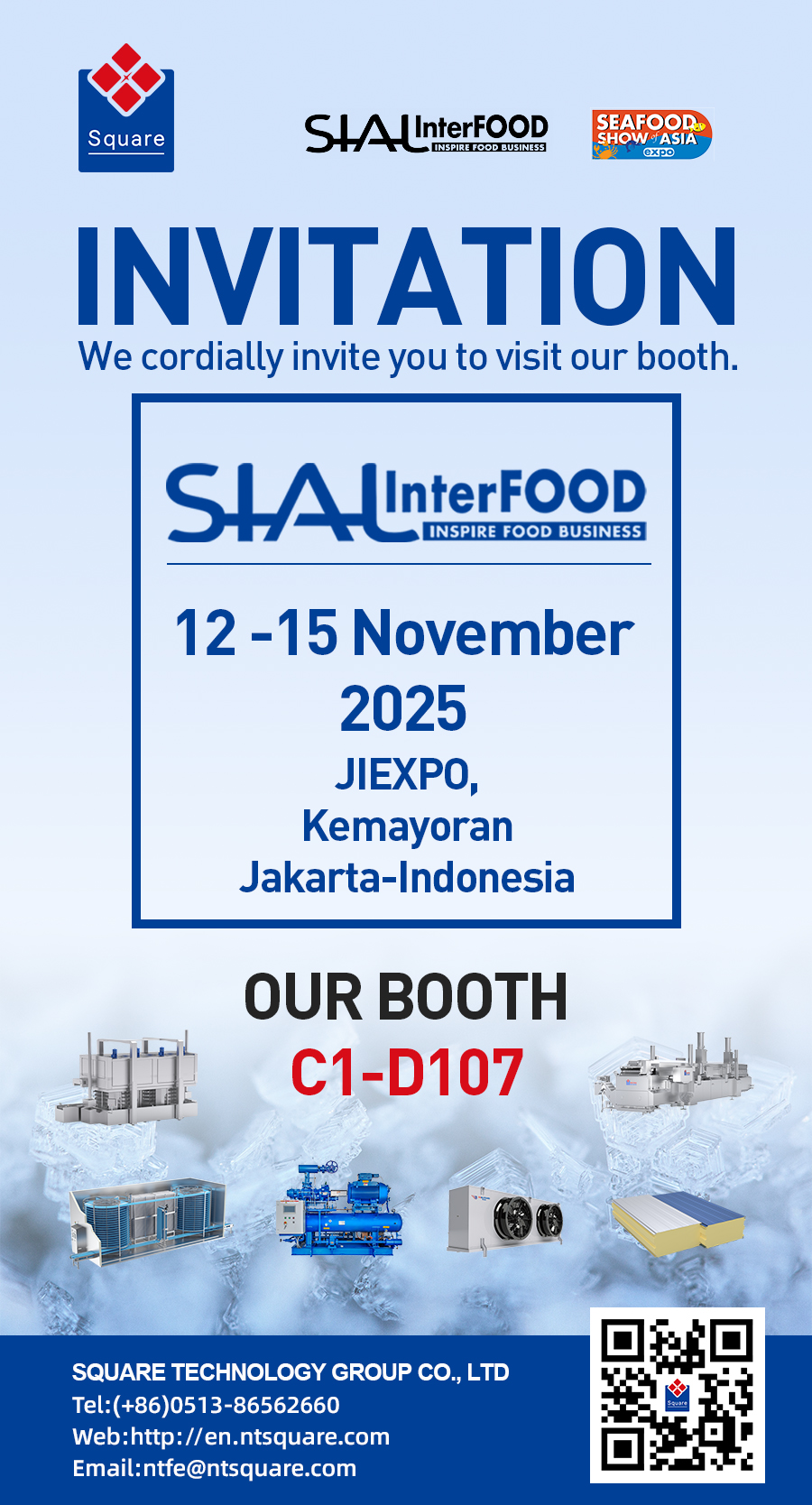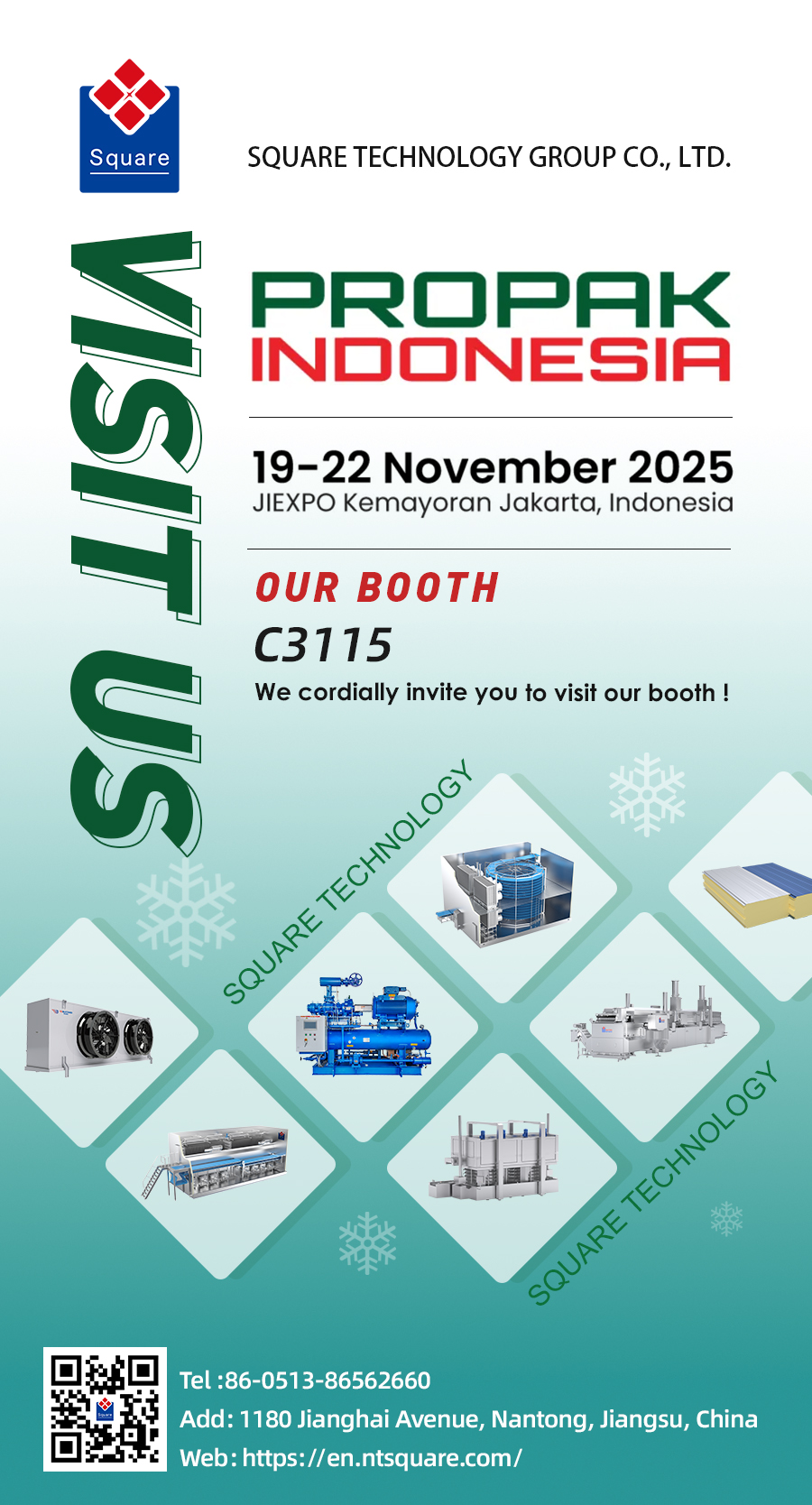Immersion freezing plays a crucial role in seafood processing, offering an effective means of preserving the quality of fish. This method involves submerging seafood in a liquid freezant, which allows rapid freezing while maintaining the essential nutrients and moisture content. This blog will focus on immersion freezing and the role it plays in seafood processing.
Understanding Immersion Freezing in Seafood Processing
Immersion freezing is crucial for seafood processing due to its rapid and even temperature reduction capabilities and used by companies like Square Technology. This method involves submerging products in a cold liquid, offering efficient freezing through direct contact.
Principles of Immersion Freezing
Immersion freezing entails submerging seafood in a liquid such as brine or propylene glycol. This method is effective for products like prawns and fish, facilitating quick heat transfer and rapid freezing. Compared to air-based methods, immersion freezing achieves more uniform freezing due to intimate contact with the liquid. Understanding the physics of liquid immersion helps optimize seafood quality by controlling ice crystal formation, which is vital for texture preservation.
Techniques and Technologies
Different techniques enhance immersion freezing efficiency, such as using liquid nitrogen for crust-freezing delicate items. Various technologies like ultrasonic-assisted freezing and pressure shift freezing improve freezing rates. Liquid immersion may involve direct immersion or spraying, both contributing to enhanced preservation of seafood products by reducing microbial activity and enzymatic reactions.
Comparative Analysis With Other Freezing Methods
Compared to methods such as blast freezing and plate freezing, immersion freezing offers more rapid and uniform temperature reduction. The use of cryogenic freezing with liquid nitrogen can achieve faster freezing rates but might not be as cost-effective. Spray freezing may not provide the same full-contact benefits as immersion. Liquid immersion is particularly suitable for preserving seafood’s natural texture and flavor, distinguishing it from other methods of freezing.
The Benefits of Rapid Freezing for Seafood Quality
Rapid freezing technology offers significant advantages for maintaining seafood quality. By minimizing ice crystal size, it preserves the texture and nutritional content, extending shelf life and reducing spoilage. In addition, rapid freezing effectively inhibits microbial growth, ensuring food safety and maintaining the quality of fish.
Extended Shelf Life and Reduction of Spoilage
Rapid freezing significantly extends the shelf life of seafood by minimizing oxidative processes and spoilage. The technique involves quickly lowering the temperature, which helps prevent the formation of large ice crystals that can damage cell structures. This results in a better retention of texture and flavor.
Smaller crystals formed during this process help maintain the integrity of the seafood. This contributes to a longer shelf life compared to conventional methods. Rapid freezing also reduces the rate of spoilage caused by oxidation and microbial activity, ensuring seafood remains fresh for an extended period.
Preservation of Nutritional Quality
Preserving the nutritional quality of seafood is crucial for both consumer health and satisfaction. Rapid freezing excels in this area by reducing the loss of essential nutrients that typically occurs with slower freezing processes. Vitamins and minerals remain largely intact, providing a nutritious product.
The rapid reduction in temperature helps maintain the quality of fish. It prevents the degradation of omega-3 fatty acids and other valuable compounds. This ensures that consumers receive a product rich in its original nutritional content, contributing to its overall appeal and health benefits.
Inhibition of Microbial Growth and Deterioration
Rapid freezing effectively inhibits microbial growth by quickly bringing seafood to temperatures below the threshold needed for microorganisms to thrive. This method ensures high food safety standards by preventing the growth of harmful bacteria and other pathogens.
By halting microbial activities, rapid freezing maintains the seafood’s quality, reducing instances of microbial spoilage. The process minimizes biochemical reactions that lead to deterioration. Therefore, rapid freezing is an effective strategy for prolonging freshness and ensuring seafood’s safety and flavor.
Operational Aspects of Immersion Freezing in the Seafood Industry
Understanding the efficient use of immersion freezing in seafood processing involves its integration into the cold chain, addressing technical challenges, and managing cost-effectiveness. Careful attention to these operational aspects ensures high-quality preservation.
Integration Into the Cold Chain
Immersion freezing is a critical component of the cold chain, crucial for maintaining the quality of seafood. The quick reduction in temperature is achieved through a direct contact method, reducing the risk of temperature fluctuations. This effective cold chain setup minimizes quality loss by taking advantage of the latent heat of fusion.
The direct immersion method ensures uniform cooling, which is vital for maintaining the required storage temperature of seafood. Integration into existing cold chain systems demands specialized equipment that must align seamlessly with other refrigeration methods to avoid thermal shock to the product.
Challenges and Solutions in Freezing Techniques
Implementing immersion freezing techniques presents certain challenges, such as managing ice crystal formation that can affect the texture of seafood. The freezing techniques employed must control ice crystal size to prevent cellular damage. Hygiene is another factor, requiring stringent processes to maintain cleanliness throughout the process.
Innovative solutions like ultrasonic-assisted freezing and magnetic field-enhanced freezing can improve quality by allowing faster freezing rates and more uniform ice crystal distribution. Such advancements mitigate common challenges and enhance the effectiveness of immersion freezing systems.
Cost Implications and Efficiency
Operational costs are a significant consideration in adopting immersion freezing technology. While direct immersion techniques may involve higher initial investment for specialized machinery, they often result in long-term savings due to reduced energy consumption. Efficiency comes from the rapid freezing speed, which decreases overall processing time and labor costs.
Economical benefits arise from preserving seafood effectively, extending shelf life, and maintaining product quality, reducing waste. The investment in efficient freezing technology aligns with business goals of maintaining quality while controlling operating costs.
Post-Freezing Handling and Storage of Seafood
Proper handling and storage of frozen seafood are essential to maintaining quality and safety. Important considerations include implementing effective thawing methods, innovative packaging solutions, and optimal cold storage and transportation practices.
Thawing Methods and Practices
Thawing is a critical step to ensure seafood quality and minimize nutrient loss. Common methods include refrigerator thawing, which is slow but maintains texture and flavor, and microwave thawing, suitable for quick preparations but risks uneven heating. Avoid room temperature thawing to reduce bacterial growth.
To prevent drip loss and maintain structural integrity, thawing in cold water offers a balance between speed and quality. Monitoring temperature and time prevents autolysis, which could deteriorate product quality.
Packaging Innovations for Frozen Products
Modern packaging innovations aim to protect frozen seafood from environmental factors. Vacuum packaging minimizes air contact, reducing freezer burn and extending shelf life. Sealed plastic films with barrier properties help maintain moisture content.
Modified atmosphere packaging (MAP) is another technique that alters air composition within the package to slow degradation. Additionally, biodegradable packaging materials offer an eco-friendly option without compromising product quality.
Cold Storage and Transportation
Cold storage maintains seafood quality by slowing down spoilage reactions. Maintaining a consistent temperature below the freezing point, around -18°C, is crucial. Facilities should be equipped to handle large-scale storage without temperature fluctuations.
Transportation also plays a key role, requiring refrigerated vehicles to ensure seafood remains safe and fresh until delivery. Ensuring minimal exposure to temperature changes during loading and unloading can prevent thawing. Implementing effective logistics and monitoring systems reduces risks associated with long-distance transport.




